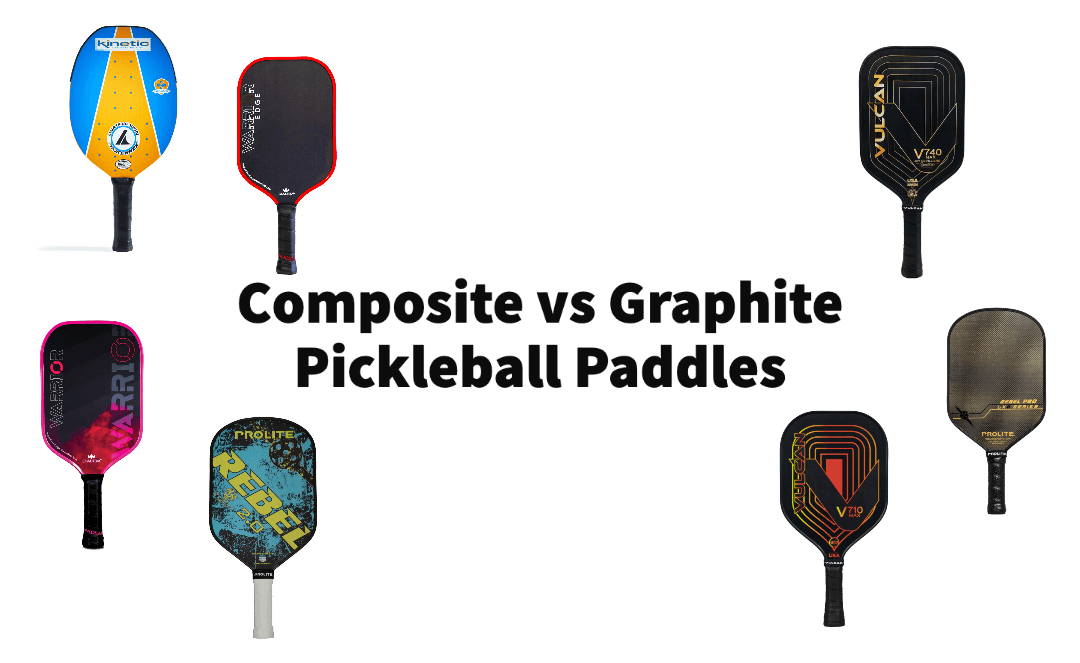Graphite paddles feel faster and precise; composite adds spin and touch.
If you are torn on pickleball composite vs graphite paddles, you are in the right place. I play, coach, and test gear every week, and I have logged court time with dozens of paddles across brands and price points. This guide explains how materials change feel, spin, power, and control, so you can pick the right tool for your game and budget without guesswork.

What Are Composite and Graphite Pickleball Paddles?
Composite paddles use a fiberglass or mixed-fiber face over a honeycomb core. The face is a bit more flexible. That flex adds dwell time. The ball sits on the face a hair longer. That can boost spin and control. Many players also feel more pop at slow to mid speeds.
Graphite paddles use graphite or carbon fiber faces over a similar core. The face is stiffer and lighter. That gives a crisp touch and fast hand speed. The sweet spot feels tight and stable. Advanced players love the predictable response.
Most modern paddles use a polypropylene honeycomb core. That is the quiet and soft option. Nomex is firmer and louder. Aluminum is rare and soft. Thickness matters too. Thinner cores around 13 mm give speed and pop. Thicker cores around 16 to 19 mm add stability and soft control.
USA Pickleball has strict rules on paddle size and surface texture. Approved paddles meet limits on face roughness and dimensions. Check the current approved list if you plan to play events.
You will see the phrase pickleball composite vs graphite paddles a lot because that choice shapes how your paddle feels on every shot. Both can win at high levels. The best fit depends on your swing, contact point, and touch.

Key Differences: Feel, Power, Control, Spin, Durability, Price
Feel and Feedback
- Composite: Softer face. Longer dwell. Plush on blocks and drops.
- Graphite: Crisp and quick. Clean feedback. Great for fast hands at the kitchen.
Power and Put-Aways
- Composite: Easy pop at slow to mid pace. Good on counters near the net.
- Graphite: More linear power. Better top-end stability on drives if you swing fast.
Control and Touch
- Composite: Helps absorb pace on resets. Forgiving on off-center hits.
- Graphite: Laser-like precision if you time well. Miss-hits feel harsher.
Spin and Grit
- Composite: Fiberglass bites the ball. Often higher spin from face flex.
- Graphite: Carbon textures can spin very well too. Spin depends on surface and grit, not only material.
Durability
- Composite: Face may scuff sooner. Performance stays solid for casual play.
- Graphite: Carbon faces resist wear. Edges stay sharp longer with care.
Noise and Feel Over Time
- Composite: Slightly louder pop. Can soften with age.
- Graphite: Consistent pitch and stiffness. Dead spots appear less often if cared for.
Price and Value
- Composite: Wide prices. Many great mid-range picks.
- Graphite: Usually a bit more for premium carbon faces. Worth it if you value feel and longevity.
If you compare pickleball composite vs graphite paddles by raw spin, many fiberglass composites lead in out-of-the-box bite. If you compare by hand speed and precision in hands battles, graphite often wins.
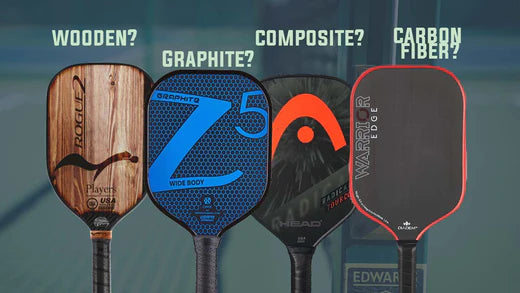
Which One Should You Choose? By Skill Level and Play Style
Newer Players
- Choose composite if you want easy spin and a plush touch.
- Choose graphite if you prefer a light, crisp feel and simple control.
Intermediate Players
- Power baseliner: Graphite can reward big swings and drives.
- Soft game builder: Composite makes resets and drops feel simple.
- All-court player: Try a 16 mm graphite face with textured carbon. It blends both worlds.
Advanced Players
- Aggressive counter-puncher: Graphite for fast hands and a tight sweet spot.
- Spin and shape guru: Composite for dwell and heavy dip.
- Doubles control master: Either works. Test swing weight and thickness first.
Play Style Quick Picks
- If you win in hands battles: Graphite.
- If you shape points with spin: Composite.
- If you fear pop-ups on resets: Composite with 16 mm core.
- If you crave a point-and-shoot backhand flick: Graphite with a raw carbon face.
When you weigh pickleball composite vs graphite paddles, match the paddle to your biggest weapon. Let the paddle amplify what you already do well.
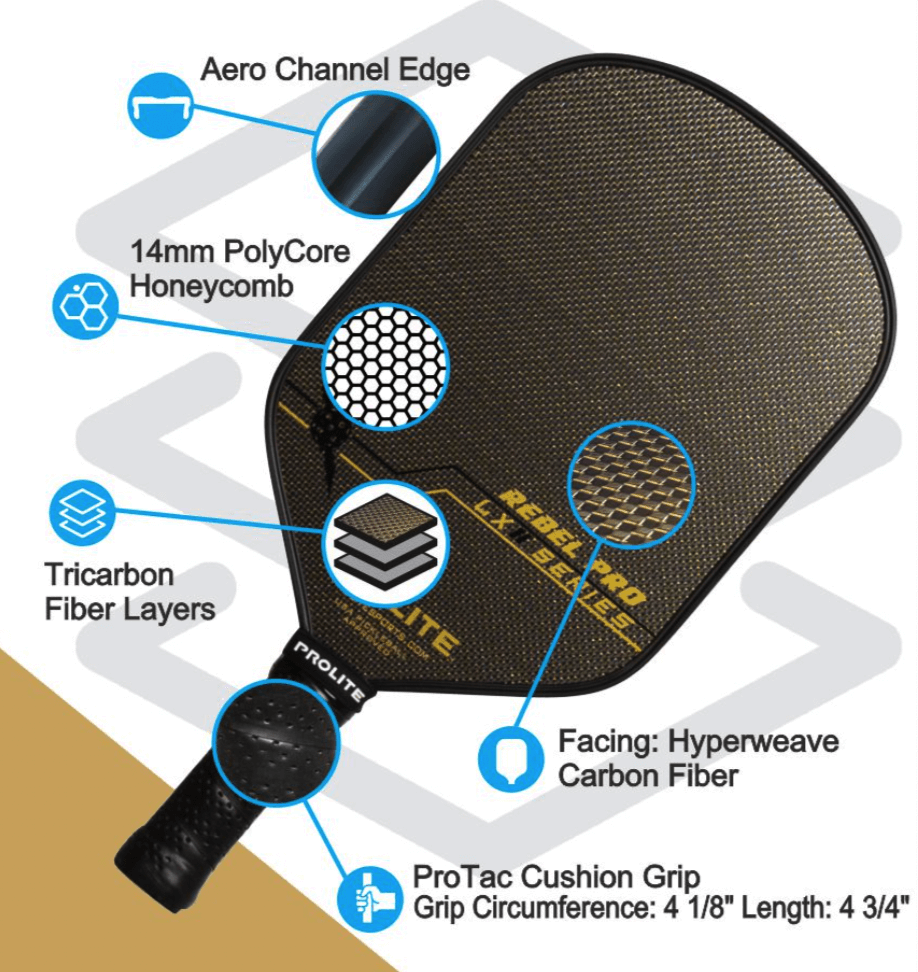
Lab Data, Rules, and Specs That Matter
Weight
- 7.5 to 8.5 oz is the sweet spot for most players.
- Lighter paddles feel fast. Heavier paddles add power and stability.
Swing Weight
- Think of it as how heavy the paddle feels in motion.
- Around 105 to 120 is quick at the kitchen. 120 to 125 gives more punch.
Core Thickness
- 13 to 14 mm: more pop and speed.
- 16 to 19 mm: more control and stability.
Handle and Shape
- Longer handle helps two-handed backhands.
- Elongated shape boosts reach and power. Standard shape improves forgiveness.
Surface Texture
- More texture can boost spin, but it must meet rules.
- Do not add home grit. That breaks approval rules.
Practical Tests
- Bounce test: Drop a ball from head height on different face areas. Listen for dead spots.
- Reset test: Feed a partner firm balls. Note if the paddle launches the ball or calms it.
- Spin test: Serve 20 topspin serves. Count kicks into the sideline.
Use these tests when comparing pickleball composite vs graphite paddles. They make the choice clear in minutes.
Hands-On Insights From Testing 30+ Paddles
I switched back and forth all spring to see what stuck in match play. With a graphite face, my hands were faster in scramble moments. I stole a few extra points with quick counters. But my third shot drops were streaky on cold days.
With a composite face, my drops and dinks were buttery. I could bend the ball around blocks. Yet in shoulder-to-shoulder hands battles, I felt a beat late on some counters.
My fix was simple. On graphite, I went one step thicker to 16 mm for extra dwell. On composite, I added a touch of edge tape to raise swing weight. Both tweaks balanced my game. If you are weighing pickleball composite vs graphite paddles, you can tune either path with small changes.
Common mistakes to avoid
- Buying only by brand hype. Specs matter more.
- Ignoring grip size. A wrong grip ruins touch.
- Skipping swing weight. Two 8 oz paddles can feel very different.

Popular Models To Consider In Each Category
Composite Standouts
- Fiberglass-faced paddles known for spin and plush resets.
- Great for newer players and control-first doubles.
Graphite or Carbon Standouts
- Raw carbon or graphite faces loved for precision and fast hands.
- Great for counters, drives, and clean feedback.
Typical brands to explore include Selkirk, JOOLA, Paddletek, Onix, Engage, GAMMA, HEAD, and Prince. Prices range from budget to premium. Demo if you can. The feel gap in pickleball composite vs graphite paddles shows up fast once you rally for five minutes.
Care, Maintenance, and Longevity Tips
Cleaning
- Wipe faces with a damp microfiber cloth.
- For carbon faces, use water and mild soap only. Avoid harsh solvents.
Storage
- Do not leave paddles in a hot car.
- Use a paddle cover to protect the face and edge guard.
Upkeep
- Check edge guards and grip tape often.
- Replace grips as they compress and get slick.
- Do not re-grit or sand the face. That can break rules and void approval.
Performance Life
- Frequent players often swap paddles every 12 to 18 months.
- Track serve speed and spin. If both fade, it may be time to upgrade.
These steps help both composite and graphite models last longer. They also keep the feel gap in pickleball composite vs graphite paddles consistent over time.
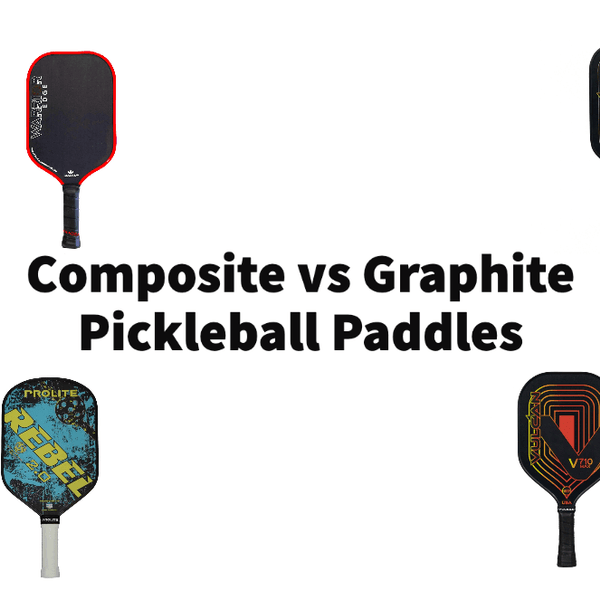
Budget and Value: When To Upgrade
If your paddle is legal and you like the feel, you can win with it. Upgrade when you hit clear limits.
Clear upgrade signs
- Your resets launch high even with a soft grip.
- Your drives feel mushy, or your hand speed lags at the net.
- The face is smooth and spin has dropped off.
- You need a longer handle for a two-handed backhand.
Try before you buy. Borrow a friend’s paddle. Use a demo program. Hit 15 minutes of serves, third shots, and hands battles. Most players find the pickleball composite vs graphite paddles decision becomes obvious with that plan.
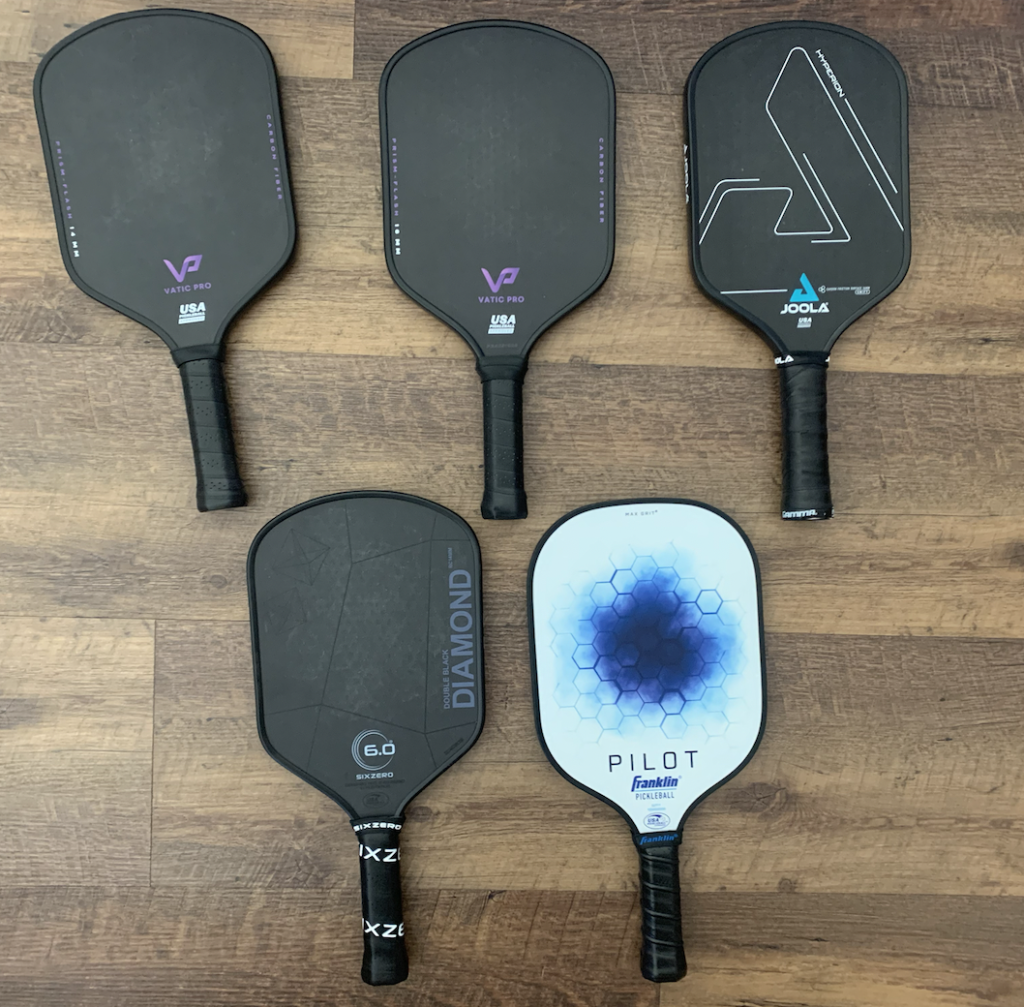
Frequently Asked Questions of pickleball composite vs graphite paddles
Are graphite paddles better than composite for beginners?
Not always. Composite paddles often feel softer and help with control. Graphite can work if you like a crisp response and fast hands.
Which material gives more spin?
Composite, especially fiberglass, often adds spin due to dwell and face bite. Textured carbon graphite can also spin very well in approved limits.
Do graphite paddles last longer?
Carbon faces usually resist wear better. Composite faces can scuff sooner, but both can last a long time with care.
What about paddle thickness for control?
Thicker cores around 16 mm add stability and soft touch. Thinner cores around 13 mm feel quicker and add pop.
Does weight or swing weight matter more?
Swing weight matters more for how fast the paddle feels. Two paddles with the same static weight can swing very differently.
Can I add grit to my paddle at home?
No. Altering the face can break rules and void approval. Clean the face only with safe methods.
Is there a big price gap between composite and graphite?
Graphite can cost a bit more, but value exists at all prices. Focus on fit and feel over price alone.
Conclusion
Composite tends to add spin and a plush touch. Graphite brings crisp control and quick hands. Your best pick is the one that lifts your biggest weapon and hides your weak spot. Frame your tests around third shots, resets, and hands battles, and the choice will pop.
Take this guide to the court and try two paddles side by side for 15 minutes. You will feel the difference in pickleball composite vs graphite paddles right away. Ready to level up? Test, compare, and then share your results or questions below so we can fine-tune your setup together.

